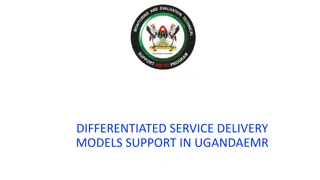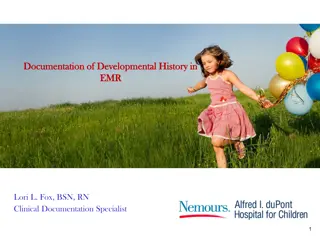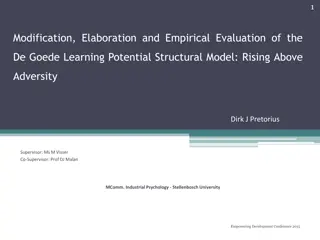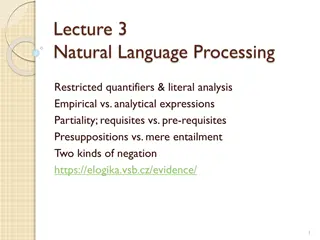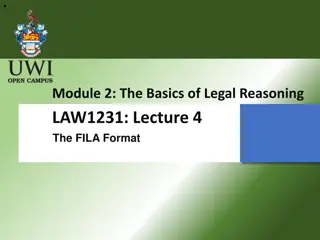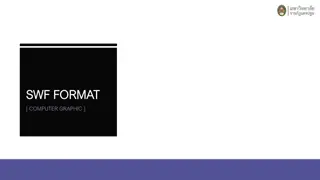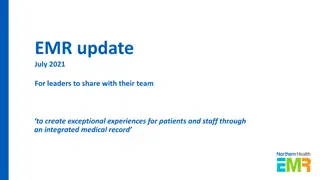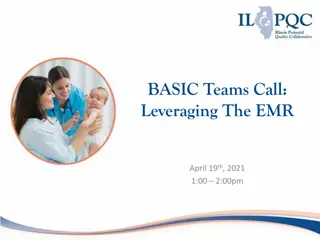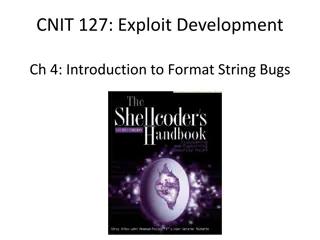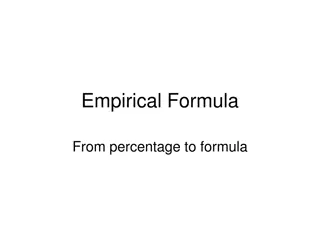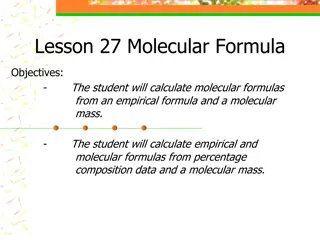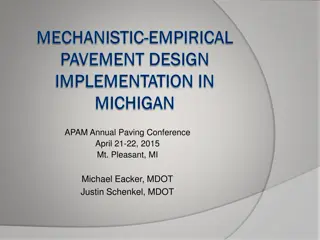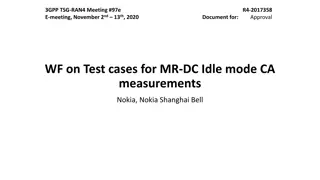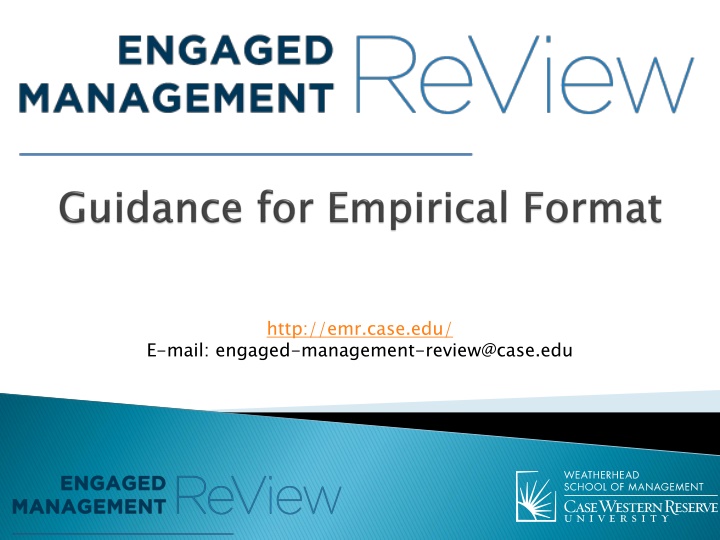
Effective Guidelines for Writing an Empirical Paper for EMR
Learn about the essential components of writing an empirical paper for Engaged Management Review (EMR), including the required format, sections, and voice. Understand the difference between scholarly and practitioner voices, guidelines for each section, and the core aspects to cover in your research. Enhance your understanding of the purpose, methods, findings, and implications of your study, ensuring a comprehensive and impactful paper for EMR submission.
Download Presentation

Please find below an Image/Link to download the presentation.
The content on the website is provided AS IS for your information and personal use only. It may not be sold, licensed, or shared on other websites without obtaining consent from the author. If you encounter any issues during the download, it is possible that the publisher has removed the file from their server.
You are allowed to download the files provided on this website for personal or commercial use, subject to the condition that they are used lawfully. All files are the property of their respective owners.
The content on the website is provided AS IS for your information and personal use only. It may not be sold, licensed, or shared on other websites without obtaining consent from the author.
E N D
Presentation Transcript
http://emr.case.edu/ E-mail: engaged-management-review@case.edu
Basic empirical paper format for EMR can be found: http://emr.case.edu/contribute/ http://emr.case.edu/contribute/empirical The following slides provide additional guidance that must be followed 2
Abstract Synopsis Methods (short and quick) Main Body Required Appendix for Methods 3
Each section requires the author to speak in either a scholarly voice or a practitioner voice Scholarly voice: Uses controlled and technically precise language only understandable to academia Priority is on knowledge development and methodology Requires translation for practitioner use Practitioner voice: Uses language found in everyday contexts of the problem of practice Priority is on the solution to a real-world problem Intuitively understandable and immediately reusable by the manager for his/her everyday contexts 4
State the core issue (i.e., purpose) of the research Briefly describe the methods and sample Describe the findings Interpret the results, what the implications are Written to the voice of the scholar. 5
Purpose: one or two sentences Problem of Practice: one paragraph Results: one paragraph Conclusions: one paragraph Practical Relevance: one paragraph Keywords This section is an overview. Written to the voice of the practitioner. 6
Research Question: one or two sentences Method/Design: one paragraph Type of method (e.g., qualitative study using interviews) Type of analysis used (e.g., grounded theory) Validity/reliability issues (e.g., generalizability) Sample: one paragraph If qualitative: e.g., for interviews - kinds of people interviewed, how accessed If quantitative: e.g., for surveys no. of surveys, no. of responses, who sent to, how accessed This section is an overview. Written to the voice of the scholar. Details go in the mandatory Appendix. 7
(1) Practical Problem (practitioner voice) (2) Literature Review (scholarly voice) (3) Findings (practitioner voice) (4) Lessons for Practice (practitioner voice) (5) Contributions to Theory (scholarly voice) Description for each section is provided in back up slides. 8
The Practical Problem In plain language, give reader the inside view of the problem you are dealing with The reader should get a visceral feeling for what is at stake Identify what problem you are trying to answer Few citations are necessary since this section is the practitioner s view of the problem Written to the voice of the practitioner 9
The Literature Review Telling the reader what scholars know about the general or specific problem and related subject area Identifying what is not known Organize this section by main research ideas Citations are necessary in this section although the intent of the Empirical paper is EMR is to reduce extensive citation usage, targeting about 20 citations total Written to the voice of the scholar 10
The Findings What your research found Organize into main subheadings Try to limit the findings to 3-5 big ideas The section should be understandable by the practitioner; it should not be overly technical, which is what the Appendix is for Written to the voice of the practitioner 11
The Lessons for Practice Identify realistic ways of implementing ideas This is the most difficult section since it is only the practitioner who understands the context of what has a chance of working, yet the research findings are conceived in a more general or abstract space This section is usually the least important in academic programs; here is where the practitioner- scholar can shine Written to the voice of the practicing manager 12
The Contribution to Theory Focus on 1-3 big implications of so what Should be tied to something discussed in the Literature Review section Should be interesting: a theory or set of findings that refute, change, challenge, and/or expand what is previously known A study that confirms what is known is not interesting Written to the voice of the scholar 13
Required Section Aspects of methodology needing more details Areas that need clarification Areas that need amplification (We do not know yet how much is too much technical detail.) Written to the voice of the scholar 14


